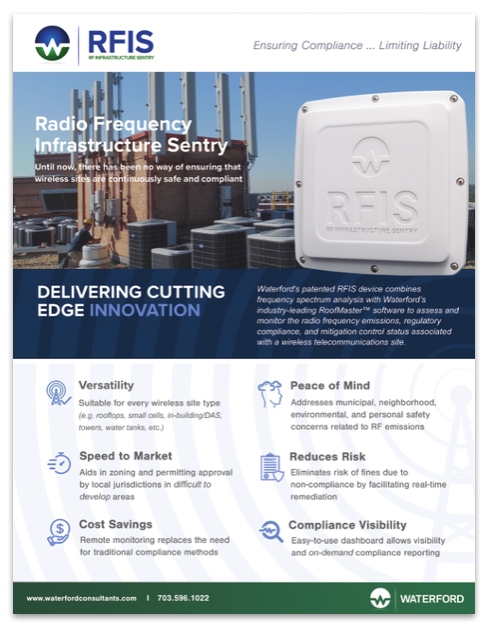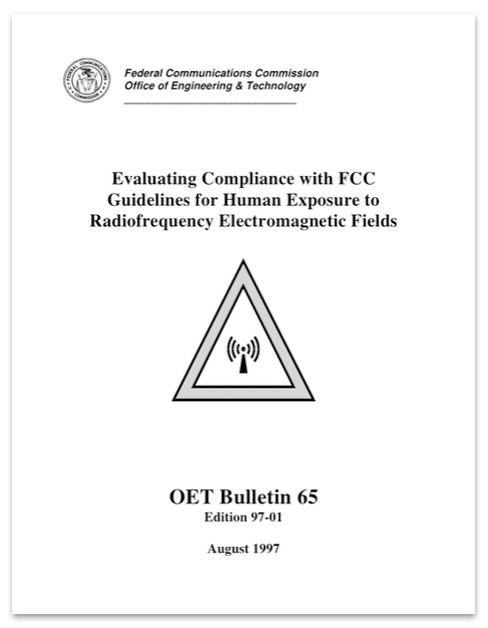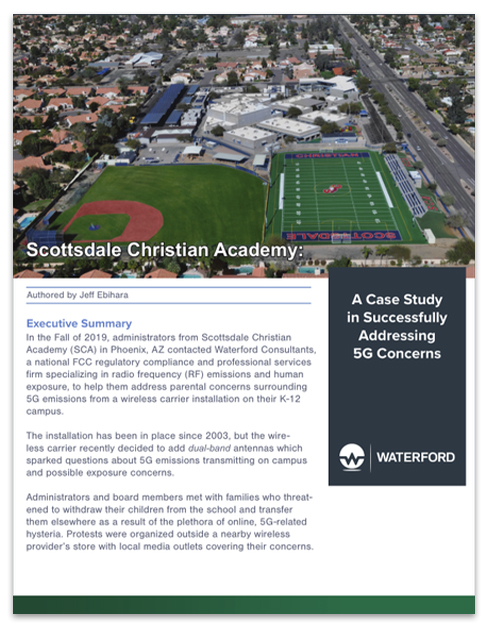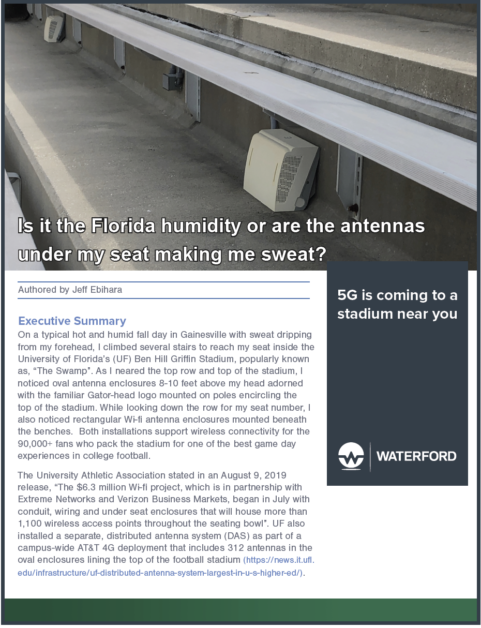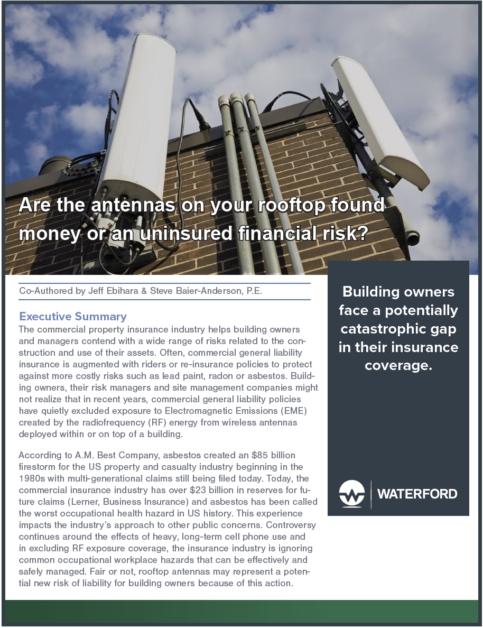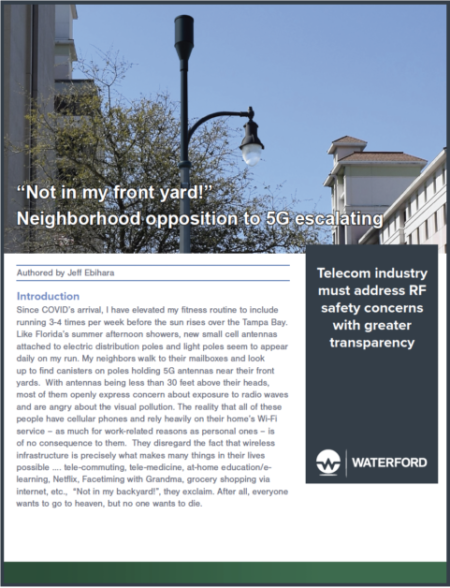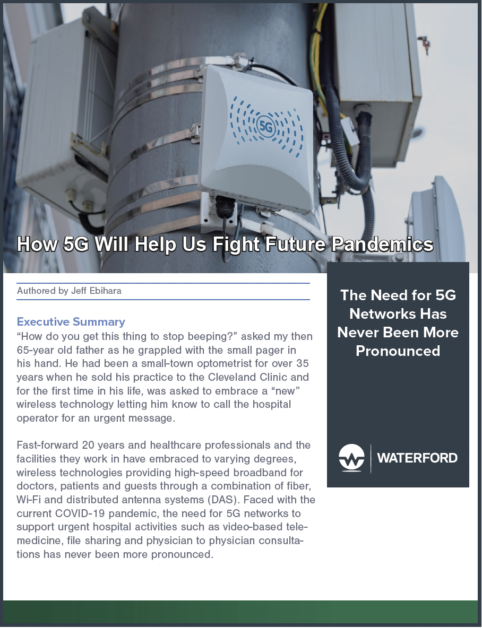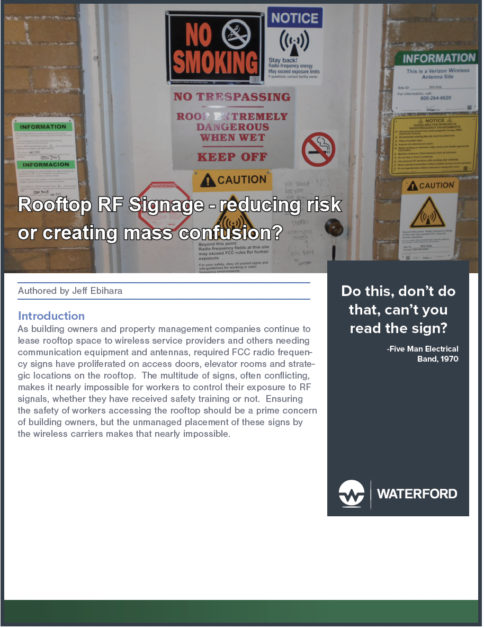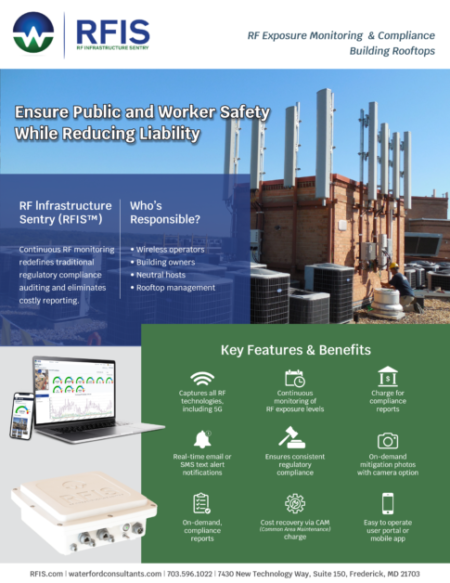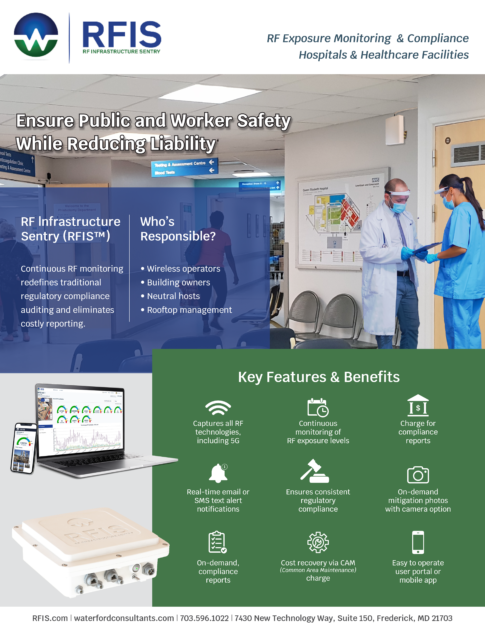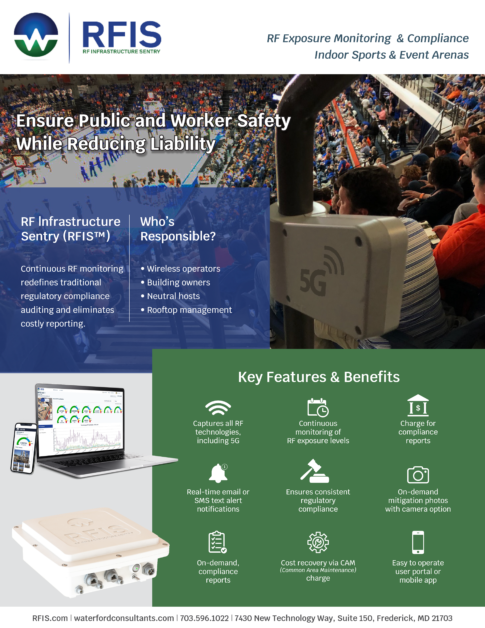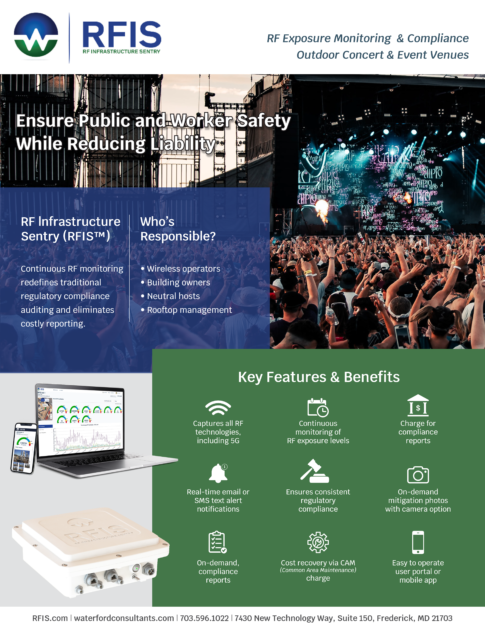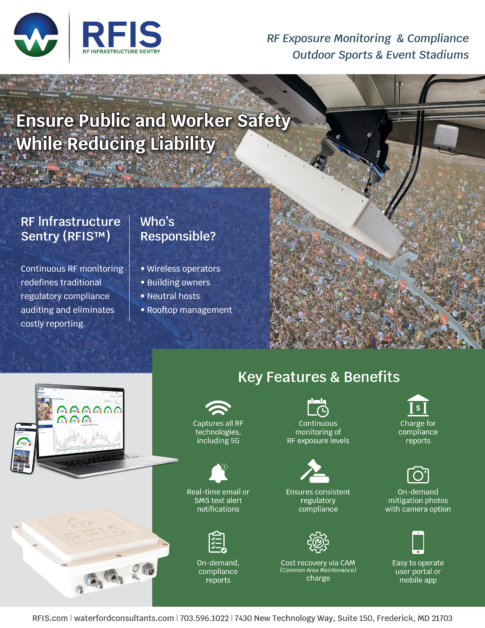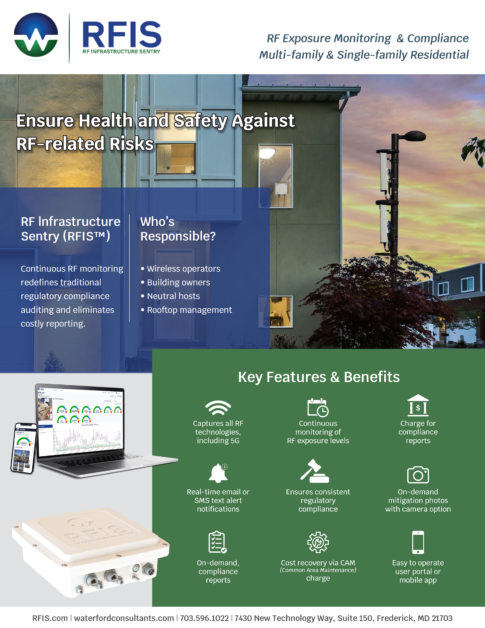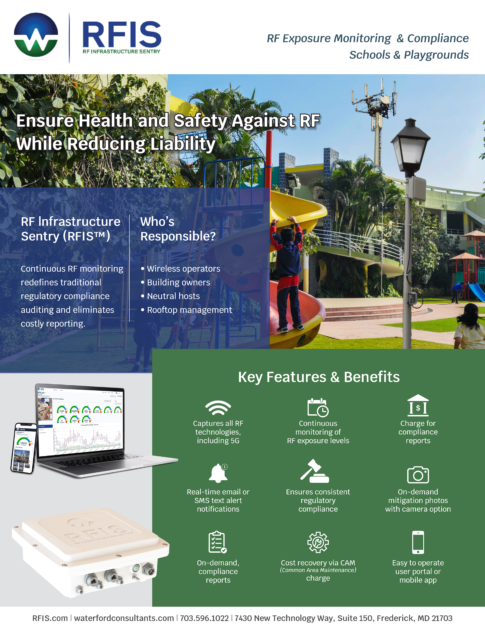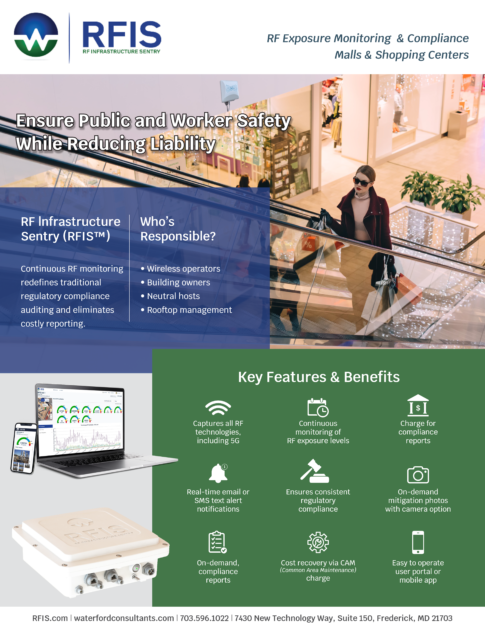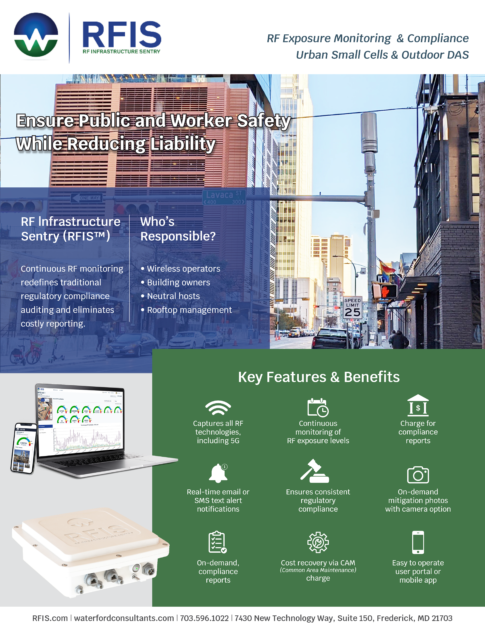All of the applicable contacts that are configured to receive alert notifications will receive an immediate email or SMS message. The alert will be reflected in the RFIS™ User Portal until it is resolved and cleared by the RFIS™ Administrator.
ABOUT US

Founded in 2004, Waterford is a professional services organization specializing in regulatory compliance, engineering, site development, and a host of software and technology-related offerings that service the wireless, utility and commercial real estate industries.
The wireless industry is constantly evolving, and Waterford is relentlessly driving change through cutting-edge innovation when and wherever possible.
RFIS is a ground-breaking technology aimed toward ensuring the public’s health and safety by revolutionizing the way in which radio frequency emissions are characterized.
It’s time for change.

FAQ

-
What happens when an alert notification is triggered?
-
How does the issue that triggered the alert notification get resolved?
The client’s RFIS™ Administrator or a Waterford RFIS™ monitoring agent will be responsible for notifying the applicable party; however, Waterford should be notified in advance so that the appropriate corrective action(s) can be implemented. At no time should the client contact the FCC or a wireless carrier without first notifying Waterford.
-
Where can I locate photos and/or additional imagery pertaining to my property (“site”)?
Photos of the site, as well as applicable drawings, details and photos of the deployed RFIS units are available on the SITE PAGE. If on-demand photos of the RFIS™ installation and/or control measures (e.g. barriers, signage, etc.) are desired, the CAMERA function on the SITE PAGE may be utilized.
-
How long must the RFIS unit(s) be in place?
Most RFIS service agreements are based on a series of auto-renewable, five (5) year terms; however, shorter periods may be considered. Once the RFIS unit is installed, a minimum of ten (10) days is required for RFIS and its proprietary software to effectively collect the environmental data it needs to establish a proper baseline. From this point, the site is monitored 24/7/365 and the results of this monitoring can be viewed in real time on RFIS’ easy-to-use, web-based, dashboard. The primary value offered by RFIS’ unique technology is its ability to ensure consistent, full time RF monitoring and regulations compliance – thus proactively delivering the message to the general public that the wireless site being monitored is safe, so removing or relocating the RFIS unit defeats this objective and is highly discouraged.
-
Where is the RFIS unit typically installed?
The installation location of the RFIS unit varies by application or site type.
- In the case of a communications tower, a single (1) RFIS unit is typically installed either on a lower tower section or within the tower compound on an adjacent supporting structure (e.g. fence, communications shelter, etc.). It’s not uncommon, however, for a RFIS unit to be installed at an adjacent or nearby location where the presence of RF emissions from a cell tower may be of particular concern to interested citizens. Schools, child daycare facilities, playgrounds, and even residences in close proximity to a cell tower represent locations where RFIS units have been installed.
- With small cells such as utility poles, streetlights, billboard sites, and other similar structures, a single (1) RFIS unit is typically installed below the antenna(s), but above ground level where it is safely out of reach from the general public.
- Rooftop wireless sites must be evaluated for optimal performance and configuration by RFIS’ engineering team, but in most cases, one (1) RFIS unit per carrier-sector is recommended. The RFIS unit(s) are typically installed behind the operators’ equipment on a non-penetrating roof mount.
- In-building DAS venues such as airports, stadiums, sport/concert arenas, hotels, hospitals, etc. require a comprehensive evaluation by the RFIS engineering team in order to determine the appropriate monitoring location(s). Multiple factors can impact the final RFIS unit quantity; however, most venues are satisfied with a RFIS unit being installed at each unique antenna configuration and/or area of special concern, such as high-volume public spaces, elevated catwalks above sports/concert arenas, etc.
-
How many RFIS units must be installed?
The quantity of RFIS units required to provide optimal monitoring of a wireless site’s radio frequency emissions and compliance with government regulations varies by application or site type. While most communications tower and small cell sites only require one (1) RFIS unit, rooftop and in-building DAS applications must be evaluated on a site-by-site basis and typically require more than a single RFIS unit. When the client is a building owner, property manager, or regulator, rooftop wireless sites result in one (1) RFIS unit per sector; however, when the client is a wireless operator, one (1) RFIS unit per carrier-specific sector is required – thus potentially leaving other carrier sectors un-monitored.
-
What information or data is available within the RFIS dashboard? Can reports be generated?
While the RFIS dashboard offers a wide variety of automated reports that can be downloaded on-demand including alert history, frequency activity by source, power density, RF compliance, etc., customized reporting based on the individual client’s needs is also available. If a report or information that isn’t currently available within the dashboard’s REPORTS section is desired, a request for specific information or a custom-developed report can be requested directly from this section. Responses are generally received within 24-hours of any request.
